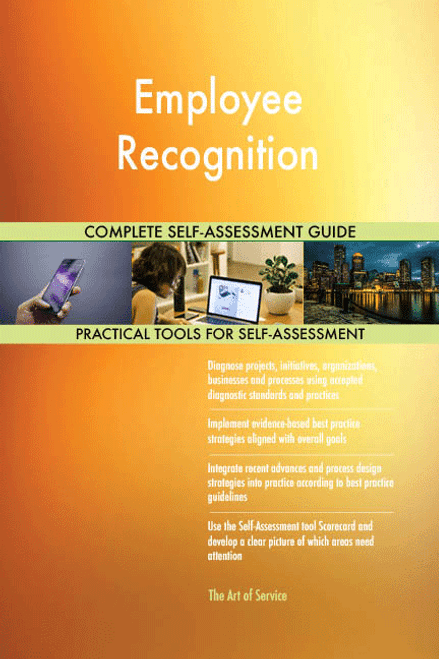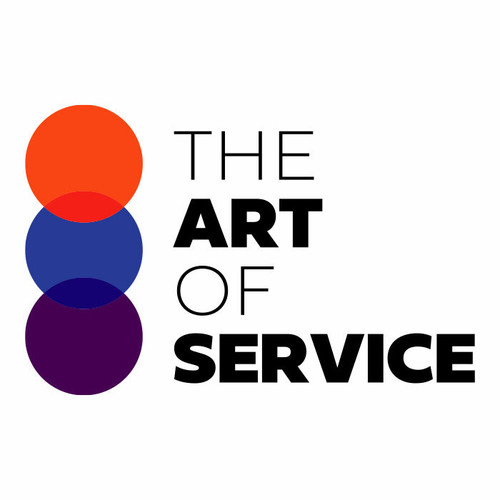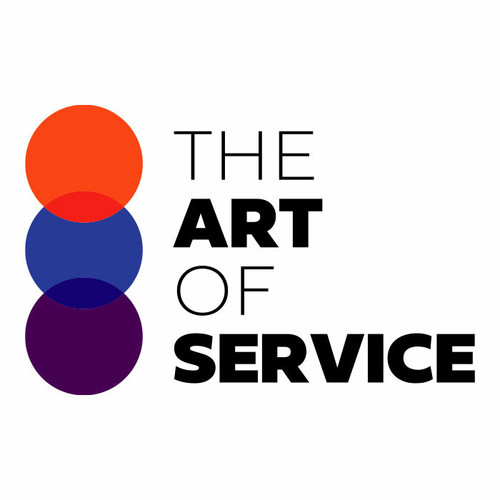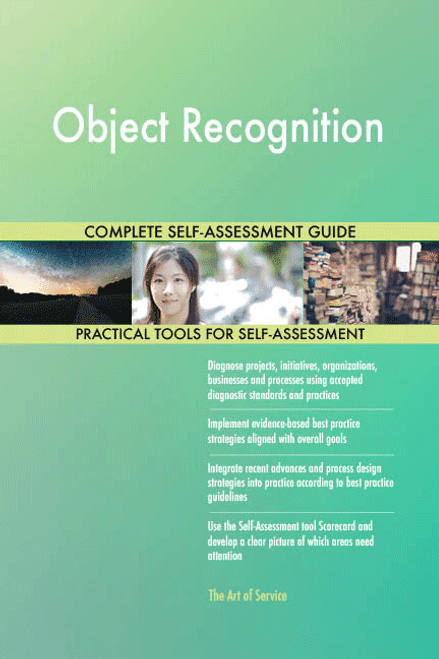Steer Employee Recognition: influence and communicate effectively with leaders, technicians, engineers, contractors and supporting staff.
More Uses of the Employee Recognition Toolkit:
- Develop, implement and oversee Employee Recognition Programs associated with Maintenance Department activities.
- Oversee Employee Recognition Program for championship contributions; lead celebrating success.
- Establish that your design complies; partners with the HRBP to manage your organization based Employee Recognition Program.
- Assure your business creates sensitive and/or complex disciplinary letters for organization employees based on information received form upper management to document the disciplinary process and inform the employee of the outcome of the Disciplinary Action.
- Confirm your organization receives, verifie, and maintains a variety of employee records and files and ensures accuracy and confidentiality of files.
- Work hand in hand with leaders in Engineering, Product, Legal, Finance and IT teams to create a Security and Privacy culture and to constantly improve the security and privacy of organization, employee and Customer Data.
- Ensure your organization provides specialized security for and monitors access to limited and restricted access areas as inventory areas, network equipment areas, and employee files and confidential records.
- Provide courteous, responsive, respectful, accessible and seamless Customer Service aligned with the Development Centers Customer Service Standards and all applicable organization customer Service Standards and employee policies.
- Secure that your design coaches leaders on self development, Employee Development, Team Building, Process Improvement, and Conflict Management.
- Warrant that your team utilizes motivational techniques / tools to drive high levels of Employee Engagement and performance.
- Manage work with facility leaders to assess, develop and implement engagement strategies (communication, recognition, employee involvement).
- Provide day to day Human Resources support to employees with the underlying objective to strengthen employee relations and engagement to enhance a positive work environment.
- Provide rigorous Data Analysis and reporting solutions based on Business Needs, highlighting key trends in employee relations to actively drive proactive solutions to minimize reactive work.
- Make sure that your business defines a quality roadmap that improves Customer Satisfaction, employee satisfaction, and higher stakeholder value.
- Develop unique timekeeping system reports for the accurate and timely analysis of employee time and attendance data for better utilization of the timekeeping system.
- Create Employee Development and performance programs to increase employee performance, engagement and satisfaction.
- Communicate and evangelize the product and design Team Goals and strategy to identify opportunities for synergy and build alignment across various stakeholders.
- Be accountable for providing oversight and operational direction for Community Outreach and Employee Engagement programs across multiple countries/cultures.
- Make sure that your venture executes on relationShip Management activities to identify client issues and opportunities and develops detailed action plans to improve the property and client relationship, with special attention on high risk accounts.
- Manage risk promoting a Culture Of Safety and demonstrating a commitment to employee and guest through organization and property safety programs and initiatives.
- Establish that your organization identifies and implements innovative solutions for practice or workflow changes to improve department operations or other department specific measures by leading unit projects and/or other department/system directed activities.
- Arrange that your organization complies; at all times with the Standards, policies and Code of Business Conduct and Ethics set out in the Employee Handbook.
- Establish and sustain positive employee environment through effective communications with all employees in order to foster an environment where innovation and cooperation are used to solve problems.
- Provide support to managers with respect to interpretation and application of employee relations and associated policies, practices, and procedures.
- Standardize Employee Recognition: Staff Management / Employee Development and growth.
- Establish simple and effective processes for reviewing Performance Management and Employee Development plans with key members of leadership.
- Be accountable for facilitating alignment on project plans, leveraging functional expertise, and driving timely execution of deliverables with Learning And Development, Employee Communications, People Systems, People Analytics and other teams.
- Measure impact and Quality Assurance results through the training process by creating Performance Evaluations to support ongoing Employee Development.
- Ensure your operation prepares employees and work groups to meet future requirements through training and Employee Development activities.
- Establish Employee Recognition: recently you recognized for having the highest level of employee satisfaction.
- Assure your operation promotes a sense of Customer Service Excellence, teamwork, harmony, motivation, recognition and Continuous Improvement at all times.
- Manage work with the System Program Management in planning, organizing, and overseeing the supply support activities of your organization.
Save time, empower your teams and effectively upgrade your processes with access to this practical Employee Recognition Toolkit and guide. Address common challenges with best-practice templates, step-by-step Work Plans and maturity diagnostics for any Employee Recognition related project.
Download the Toolkit and in Three Steps you will be guided from idea to implementation results.
The Toolkit contains the following practical and powerful enablers with new and updated Employee Recognition specific requirements:
STEP 1: Get your bearings
Start with...
- The latest quick edition of the Employee Recognition Self Assessment book in PDF containing 49 requirements to perform a quickscan, get an overview and share with stakeholders.
Organized in a Data Driven improvement cycle RDMAICS (Recognize, Define, Measure, Analyze, Improve, Control and Sustain), check the…
- Example pre-filled Self-Assessment Excel Dashboard to get familiar with results generation
Then find your goals...
STEP 2: Set concrete goals, tasks, dates and numbers you can track
Featuring 999 new and updated case-based questions, organized into seven core areas of Process Design, this Self-Assessment will help you identify areas in which Employee Recognition improvements can be made.
Examples; 10 of the 999 standard requirements:
- Has data output been validated?
- Have design-to-cost goals been established?
- Would you recognize a threat from the inside?
- How has the Employee Recognition data been gathered?
- How do you listen to customers to obtain actionable information?
- Operational - will it work?
- How is Change Control managed?
- What are the expected Employee Recognition results?
- What tests verify requirements?
- What is the right balance of time and resources between investigation, analysis, and discussion and dissemination?
Complete the self assessment, on your own or with a team in a workshop setting. Use the workbook together with the self assessment requirements spreadsheet:
- The workbook is the latest in-depth complete edition of the Employee Recognition book in PDF containing 994 requirements, which criteria correspond to the criteria in...
Your Employee Recognition self-assessment dashboard which gives you your dynamically prioritized projects-ready tool and shows your organization exactly what to do next:
- The Self-Assessment Excel Dashboard; with the Employee Recognition Self-Assessment and Scorecard you will develop a clear picture of which Employee Recognition areas need attention, which requirements you should focus on and who will be responsible for them:
- Shows your organization instant insight in areas for improvement: Auto generates reports, radar chart for maturity assessment, insights per process and participant and bespoke, ready to use, RACI Matrix
- Gives you a professional Dashboard to guide and perform a thorough Employee Recognition Self-Assessment
- Is secure: Ensures offline Data Protection of your Self-Assessment results
- Dynamically prioritized projects-ready RACI Matrix shows your organization exactly what to do next:
STEP 3: Implement, Track, follow up and revise strategy
The outcomes of STEP 2, the self assessment, are the inputs for STEP 3; Start and manage Employee Recognition projects with the 62 implementation resources:
- 62 step-by-step Employee Recognition Project Management Form Templates covering over 1500 Employee Recognition project requirements and success criteria:
Examples; 10 of the check box criteria:
- Cost Management Plan: Eac -estimate at completion, what is the total job expected to cost?
- Activity Cost Estimates: In which phase of the Acquisition Process cycle does source qualifications reside?
- Project Scope Statement: Will all Employee Recognition project issues be unconditionally tracked through the Issue Resolution process?
- Closing Process Group: Did the Employee Recognition Project Team have enough people to execute the Employee Recognition project plan?
- Source Selection Criteria: What are the guidelines regarding award without considerations?
- Scope Management Plan: Are Corrective Actions taken when actual results are substantially different from detailed Employee Recognition project plan (variances)?
- Initiating Process Group: During which stage of Risk planning are risks prioritized based on probability and impact?
- Cost Management Plan: Is your organization certified as a supplier, wholesaler, regular dealer, or manufacturer of corresponding products/supplies?
- Procurement Audit: Was a formal review of tenders received undertaken?
- Activity Cost Estimates: What procedures are put in place regarding bidding and cost comparisons, if any?
Step-by-step and complete Employee Recognition Project Management Forms and Templates including check box criteria and templates.
1.0 Initiating Process Group:
- 1.1 Employee Recognition project Charter
- 1.2 Stakeholder Register
- 1.3 Stakeholder Analysis Matrix
2.0 Planning Process Group:
- 2.1 Employee Recognition Project Management Plan
- 2.2 Scope Management Plan
- 2.3 Requirements Management Plan
- 2.4 Requirements Documentation
- 2.5 Requirements Traceability Matrix
- 2.6 Employee Recognition project Scope Statement
- 2.7 Assumption and Constraint Log
- 2.8 Work Breakdown Structure
- 2.9 WBS Dictionary
- 2.10 Schedule Management Plan
- 2.11 Activity List
- 2.12 Activity Attributes
- 2.13 Milestone List
- 2.14 Network Diagram
- 2.15 Activity Resource Requirements
- 2.16 Resource Breakdown Structure
- 2.17 Activity Duration Estimates
- 2.18 Duration Estimating Worksheet
- 2.19 Employee Recognition project Schedule
- 2.20 Cost Management Plan
- 2.21 Activity Cost Estimates
- 2.22 Cost Estimating Worksheet
- 2.23 Cost Baseline
- 2.24 Quality Management Plan
- 2.25 Quality Metrics
- 2.26 Process Improvement Plan
- 2.27 Responsibility Assignment Matrix
- 2.28 Roles and Responsibilities
- 2.29 Human Resource Management Plan
- 2.30 Communications Management Plan
- 2.31 Risk Management Plan
- 2.32 Risk Register
- 2.33 Probability and Impact Assessment
- 2.34 Probability and Impact Matrix
- 2.35 Risk Data Sheet
- 2.36 Procurement Management Plan
- 2.37 Source Selection Criteria
- 2.38 Stakeholder Management Plan
- 2.39 Change Management Plan
3.0 Executing Process Group:
- 3.1 Team Member Status Report
- 3.2 Change Request
- 3.3 Change Log
- 3.4 Decision Log
- 3.5 Quality Audit
- 3.6 Team Directory
- 3.7 Team Operating Agreement
- 3.8 Team Performance Assessment
- 3.9 Team Member Performance Assessment
- 3.10 Issue Log
4.0 Monitoring and Controlling Process Group:
- 4.1 Employee Recognition project Performance Report
- 4.2 Variance Analysis
- 4.3 Earned Value Status
- 4.4 Risk Audit
- 4.5 Contractor Status Report
- 4.6 Formal Acceptance
5.0 Closing Process Group:
- 5.1 Procurement Audit
- 5.2 Contract Close-Out
- 5.3 Employee Recognition project or Phase Close-Out
- 5.4 Lessons Learned
Results
With this Three Step process you will have all the tools you need for any Employee Recognition project with this in-depth Employee Recognition Toolkit.
In using the Toolkit you will be better able to:
- Diagnose Employee Recognition projects, initiatives, organizations, businesses and processes using accepted diagnostic standards and practices
- Implement evidence-based Best Practice strategies aligned with overall goals
- Integrate recent advances in Employee Recognition and put Process Design strategies into practice according to Best Practice guidelines
Defining, designing, creating, and implementing a process to solve a business challenge or meet a business objective is the most valuable role; In EVERY company, organization and department.
Unless you are talking a one-time, single-use project within a business, there should be a process. Whether that process is managed and implemented by humans, AI, or a combination of the two, it needs to be designed by someone with a complex enough perspective to ask the right questions. Someone capable of asking the right questions and step back and say, 'What are we really trying to accomplish here? And is there a different way to look at it?'
This Toolkit empowers people to do just that - whether their title is entrepreneur, manager, consultant, (Vice-)President, CxO etc... - they are the people who rule the future. They are the person who asks the right questions to make Employee Recognition investments work better.
This Employee Recognition All-Inclusive Toolkit enables You to be that person.
Includes lifetime updates
Every self assessment comes with Lifetime Updates and Lifetime Free Updated Books. Lifetime Updates is an industry-first feature which allows you to receive verified self assessment updates, ensuring you always have the most accurate information at your fingertips.







